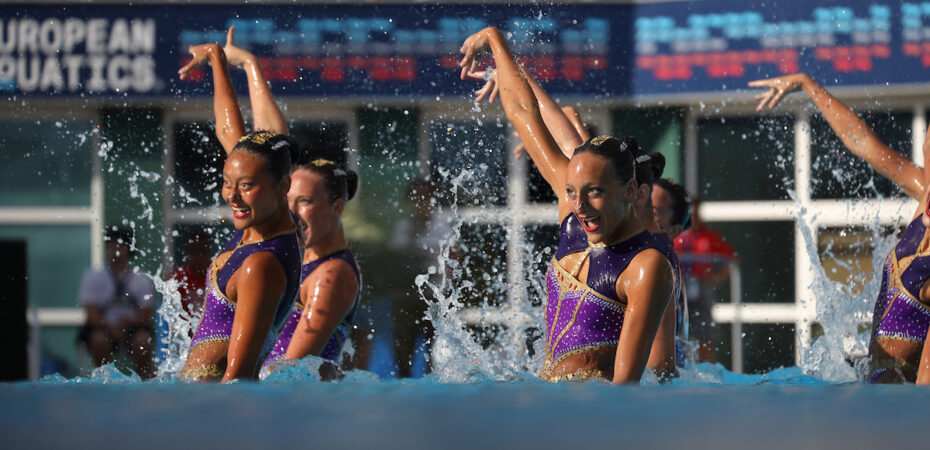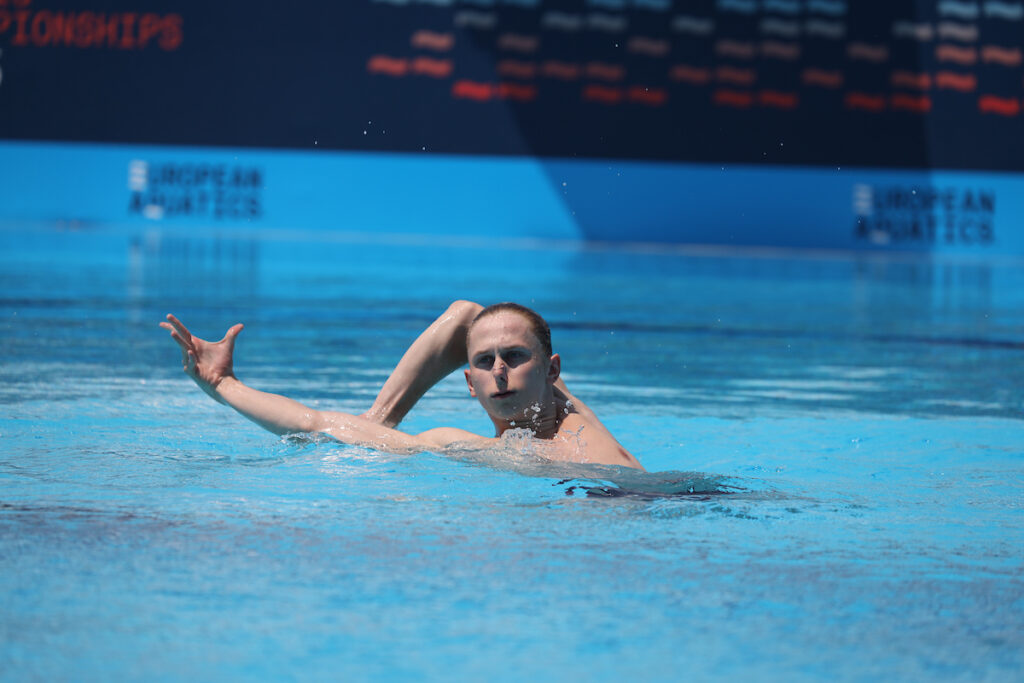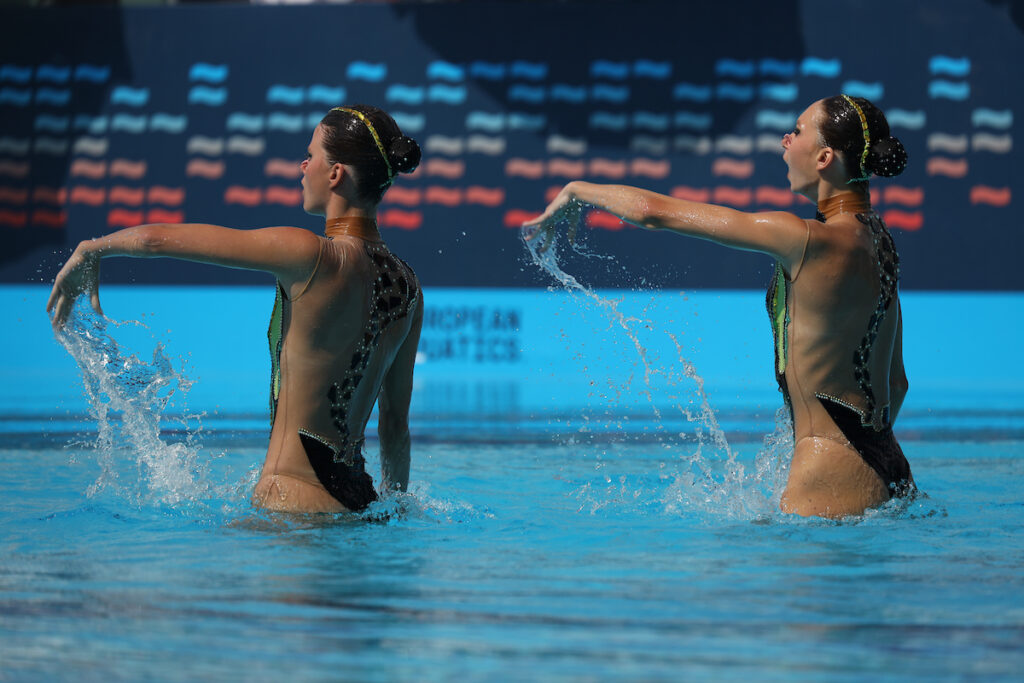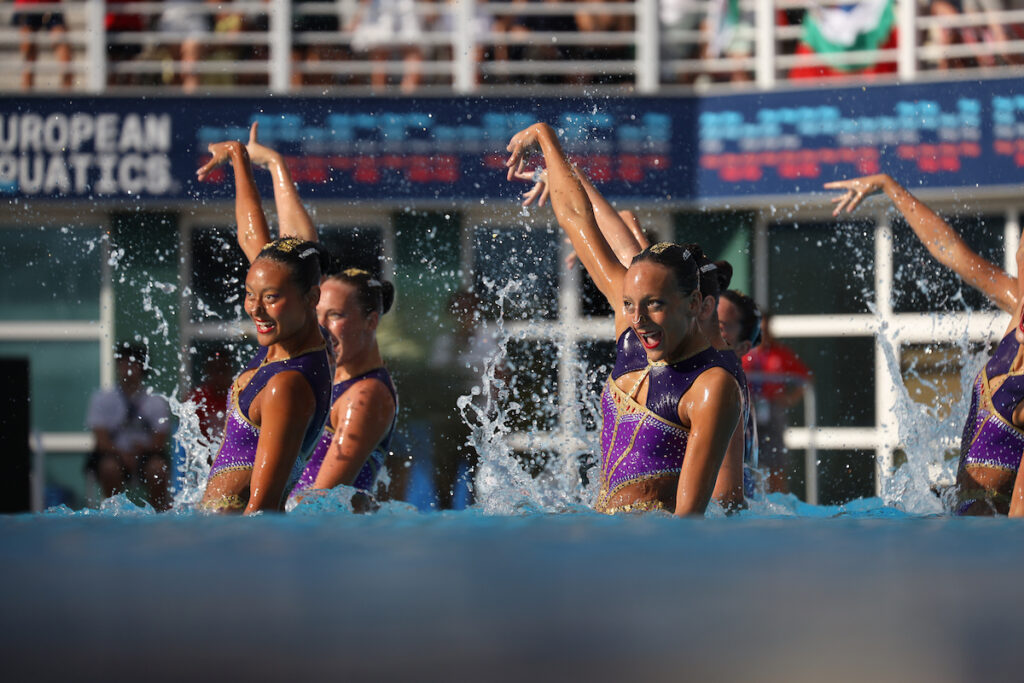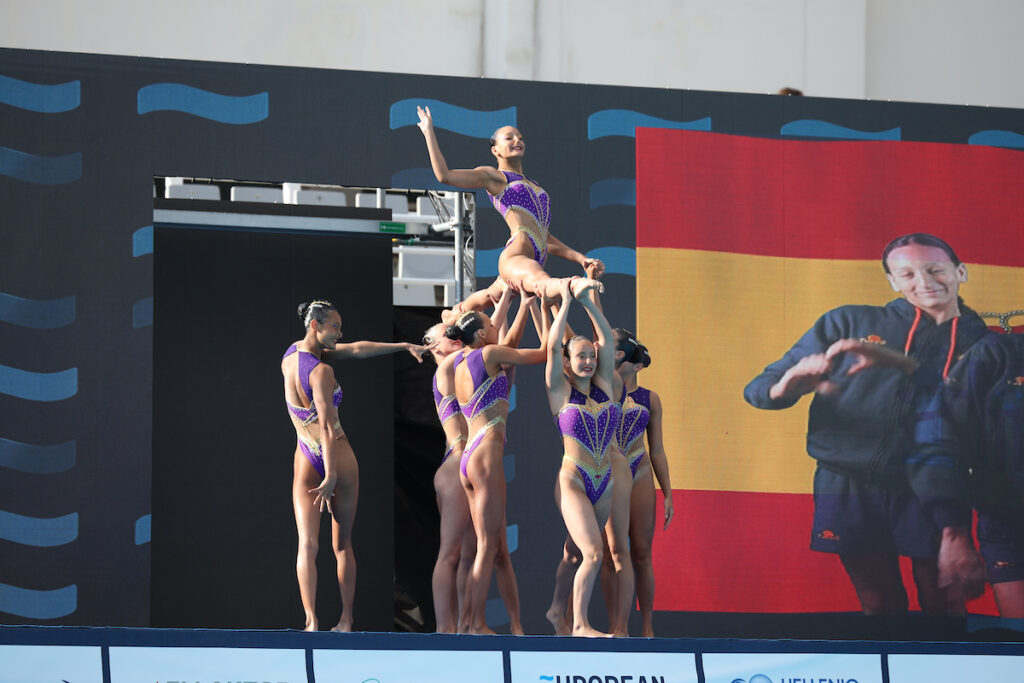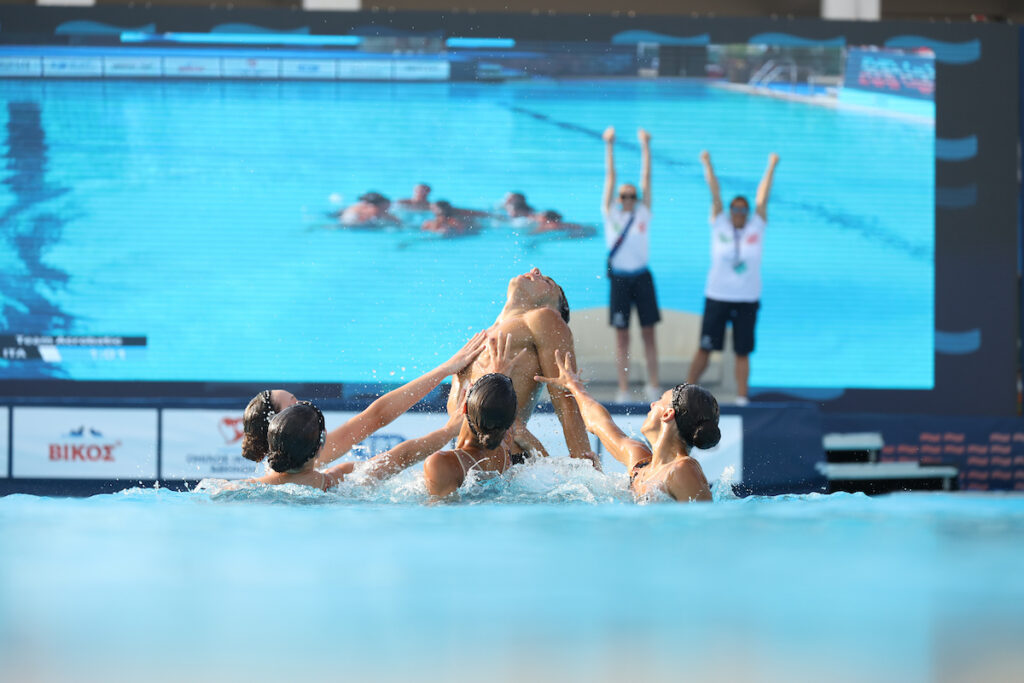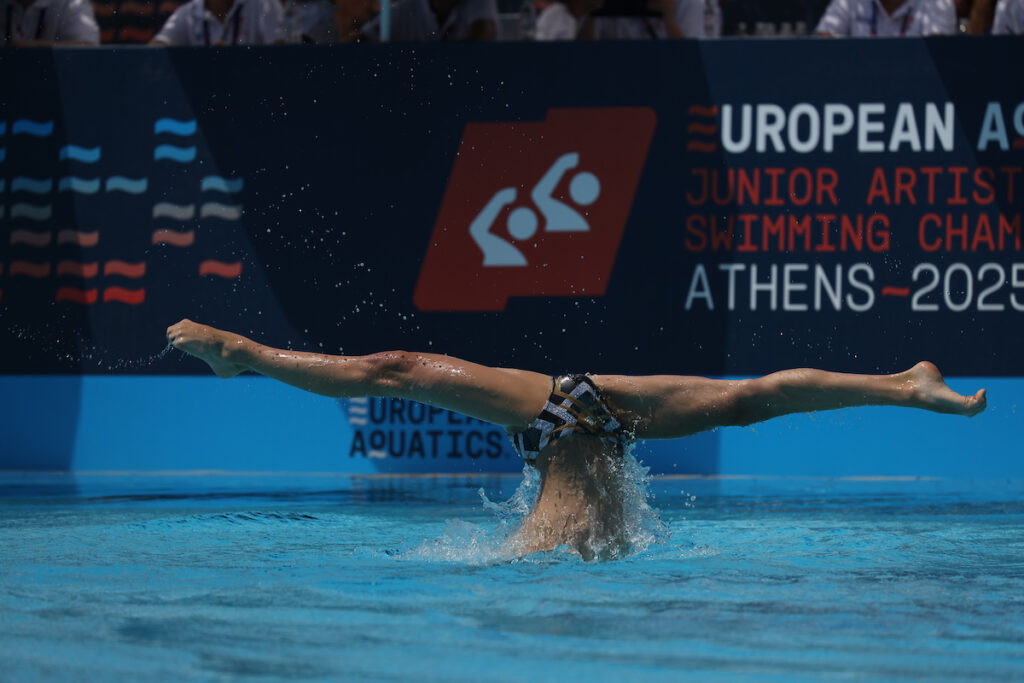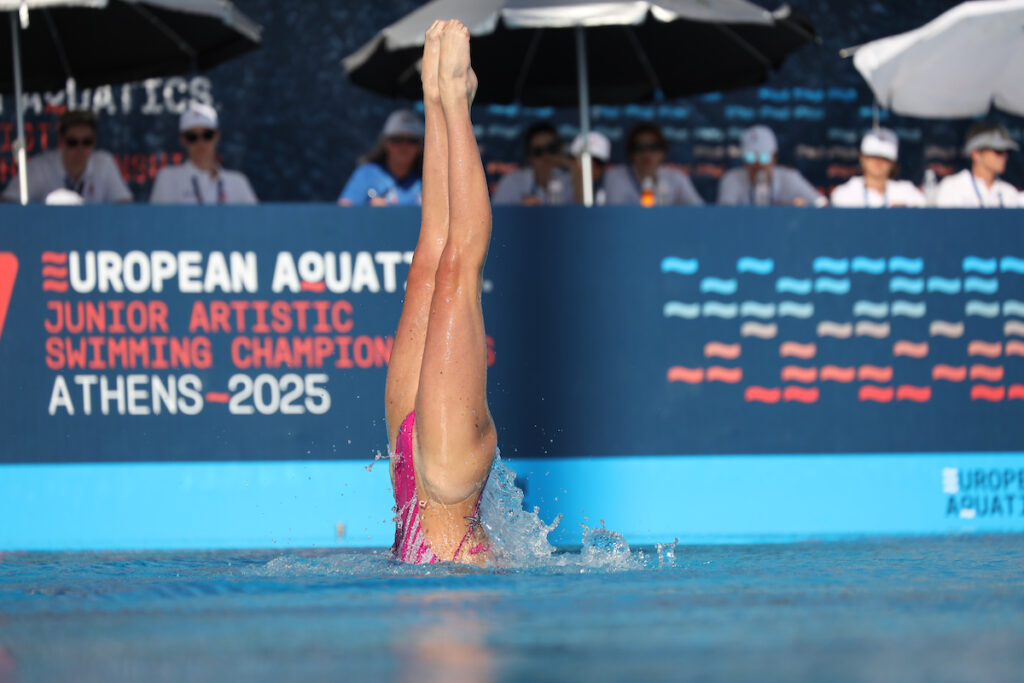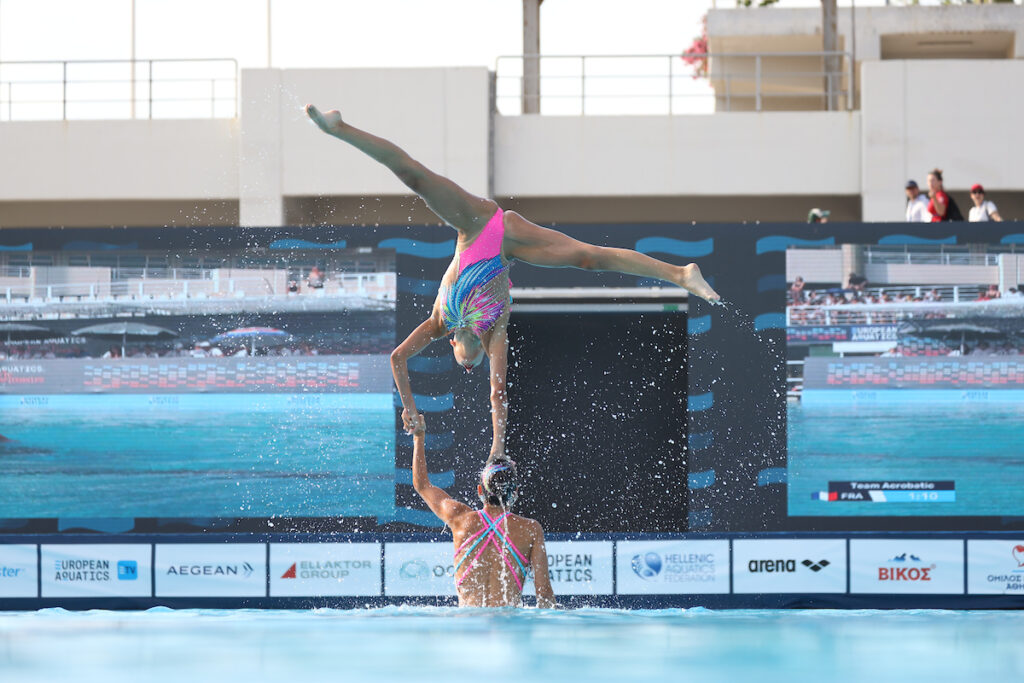Under the scorching heat of Athens, the 2025 European Junior Championships brought together the continent’s most promising junior artistic swimmers for five days of high-level competition and familiar rivalries.
One of the defining storylines was the return of athletes from Russia and Belarus, competing under the designation of Neutral Individual Athletes (AIN). Their presence was immediately felt, as they topped the medal table with six golds and eight total medals in their first appearance on the European stage since 2021.
However, it was Spain that once again claimed that Team Trophy for the second year in a row. With four gold medals and nine podium finishes in total, the nation demonstrated the depth of its junior program, delivering strong performances across all events and maintaining its position as a leading force in European artistic swimming.
Meanwhile, Ranjuo Tomblin of Great Britain closed out his junior career on a high note by winning gold in the men’s free solo — the only event not claimed by either Spain or AIN over the course of the competition.
The return of the AIN artistic swimmers was surely striking in all the events they were allowed to enter, namely the solo, duet and mixed duet events. The Russian athletes won three out of four solo titles, along with both mixed duets and the women’s free duet.
In the latter, Anastasiia Sidorina and Veronika Sokolova were particularly outstanding, delivering a commanding routine to the theme “Two Elements of One Mechanism,” backed by a massive Degree of Difficulty (DD) of 61.20, the highest done across all age categories so far this season. While Spain’s duet challenged on the artistic impression score, the gap in difficulty and execution proved insurmountable, as Sidorina and Sokolova ultimately won the title with 265.9638 and a near 20-points lead.
In the women’s solo events, Valeriia Plekhanova earned gold in the technical routine with her “Power and Tenderness” choreography, while Alisa Shevchenko overcame a disappointing free solo preliminary swim, where she received a basemark, to take gold in the final with a powerful swim to Evanescence’s “Lacrymosa.”
Zakhar Trofimov emerged as one of the standout athletes of the competition, collecting three golds and one bronze. Together with Alina Rumiantseva, he swept the mixed duet events, presenting a technical routine to modern neoclassical music and a free routine themed around electronic music. In the latter, their DD of 46.25 was also the highest posted in this event internationally so far this season.
In the technical solo, Trofimov won the title with his “Zorro” routine by a narrow margin of 0.4701 over reigning European Champion Ranjuo Tomblin of Great Britain. Tomblin, however, had the final word in the free solo final, claiming his first junior European title with his “Rock Me Amadeus” routine.
All in all, the performances of the Russian athletes were reminiscent of previous years, as they re-established themselves as one of the strongest forces in artistic swimming. Still, the traditional landscape has shifted somewhat. For the first time in decades, the Russian presence, while still formidable, was not entirely untouchable.
This championship marked the first occasion since 2007 that a Russian athlete (or delegation) left the European Junior Championships with a silver medal, and the first bronze since as far back as 1984. With the new scoring system, the full sweep that once seemed like routine is no longer guaranteed, and the growing competitiveness of the field was evident throughout the week.
After topping the medal table in 2024, Spain delivered another strong showing in Athens, winning titles in the technical duet and all three team events.
The pair of Naia Alvarez and Rocio Calle successfully defended their title in the technical duet with their dynamic “Car Chase” routine, taking advantage of a basemark suffered by the AIN pair on its opening acrobatic movement. Alvarez actually left Athens as the most decorated artistic swimmer, bringing home four golds and one silver.
In the team events, the Spanish squad delivered outstanding swims to claim all three titles. They started in the technical event with its “Mambo” routine, last performed by the senior national team at the Paris Olympics, before claiming a second gold the following day with a high-energy AC/DC-themed acrobatic routine. In the free team final, the squad bounced back from a prelims basemark to secure the top spot with a polished performance set to the theme of “Aladdin”, also inherited from the Olympic senior squad.
Isabel Shuang added two silver medals to Spain’s tally in the solo events, while the mixed duet group of Xandro de Manuel, Marta Huidobro and Judith Simo contributed to the medal haul as well, earning silver in the free and bronze in the technical event.
Italy had a strong and balanced showing in Athens, finishing with nine medals (five silvers and four bronzes) and confirming its place among Europe’s most consistent junior programs. While the team didn’t capture gold this year, it remained a steady podium presence across most events.
Gabriele Minak and Ginevra Marchetti were standout performers for the nation, each earning five medals, contributing significantly to Italy’s overall success.
France left Athens with three bronze medals, won in the technical team, acrobatic team, and technical duet events. In the latter, Lou Thuillier and Romane Temessek delivered a well-executed “Mamma Mia” routine, already seen earlier this season on the World Cup circuit as the two are also part of the senior national team.
Temessek competed in the technical solo as well, where she placed fourth and only 1.28 points behind the bronze medalist. In Athens, she had lowered her declared difficulty to 28.25, compared to the 30-31 range she had used in previous senior competitions. Likely influenced by the European Aquatics limitations on free hybrid apnea, the change seemed to nonetheless suit her.
She appeared more composed and confident, delivering a more solid and expressive performance to the song “I Put a Spell on You.” While it wasn’t enough for a medal, it was still her highest total score (226.1158) and best artistic impression of the season.
Meanwhile, Greece earned two bronze medals, a respectable result though likely below the ambitions of a team competing on home turf. The first came in the women’s technical solo, where Ismini Maria Karavasili, in her debut junior season, delivered a poised and well-executed “Dolls” routine to secure a place on the podium. The second medal was achieved on the last day in the free team final, with the Greek squad presenting a strong and determined “Warrior” routine.
Several close results added further drama to the competition, underlining the potential fine margins that now determine podium placements in the sport. In the women’s free solo, Georgia’s Maria Alavidze narrowly, and heartbreakingly, missed the podium by only 0.14 points. Spain’s mixed pair was only 0.0959 points away from silver in the free event, while the technical team final saw France, Ukraine, and Greece finishing within two-tenths of a point of each other in the battle for bronze.
Elsewhere, Slovakia continued to show steady consistency across events, notably finishing fifth in the technical event for the third year in a row, and sixth in the free duet thanks to the pair of Lea Anna Krajcovicova and Zofia Strapekova. Both athletes also placed eighth in their respective solo events, while the team earned sixth place in the technical event, further confirming the program’s stable footing at the European level.
Among other developing nations, Sweden’s duet of Cuba Seren and Brianna Vergara made a promising international debut, finishing 12th in the technical duet with a lively 1990s-themed routine. Türkiye’s Ece Ungor impressed in solo, placing fifth in free and seventh in technical, signaling continued progress on the junior stage.
This edition of the European Junior Championships served as the primary international competition for most of these athletes in 2025, with no World Junior Championships scheduled this year.
For a few others, it was a stepping stone toward the next senior competition, the World Championships, scheduled in a few weeks in Singapore, where they’ll get further opportunities to showcase their progress on the global stage.
ARTICLE BY CHRISTINA MARMET
Cover photo: Abby Bonello / European Aquatics
If you’ve enjoyed our coverage, please consider donating to Inside Synchro! Any amount helps us run the site and travel costs to cover meets during the season.

